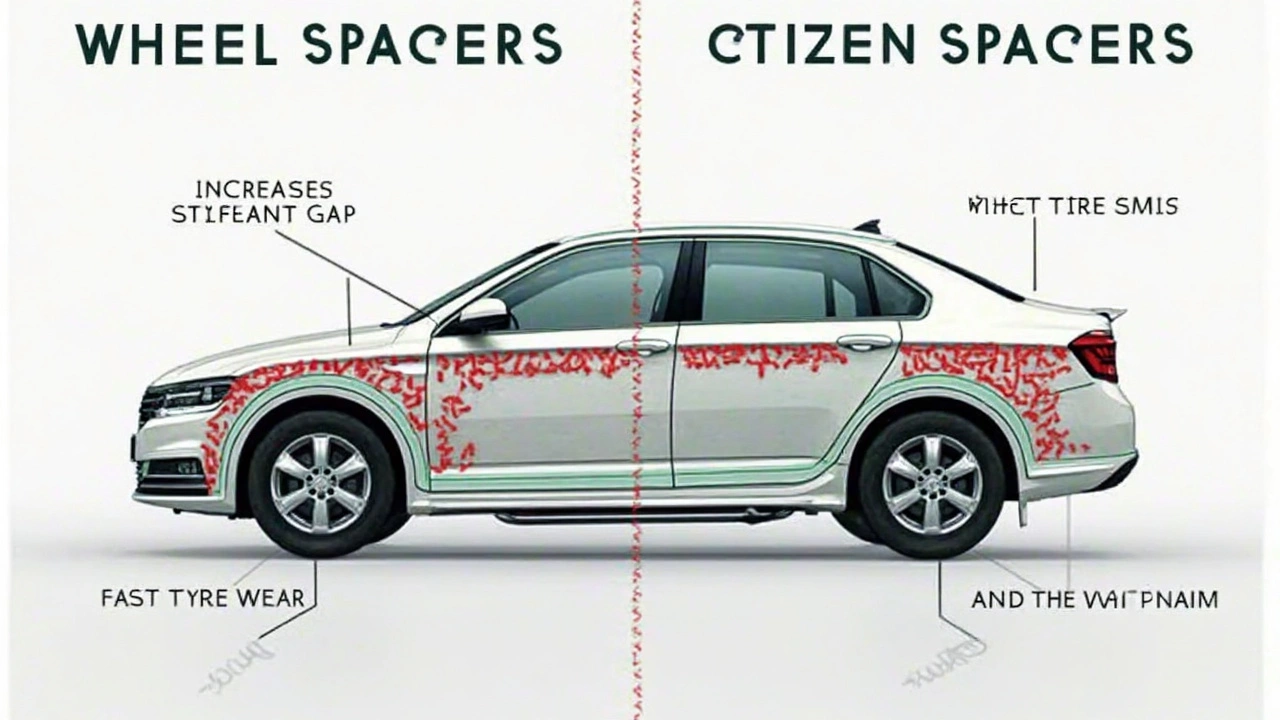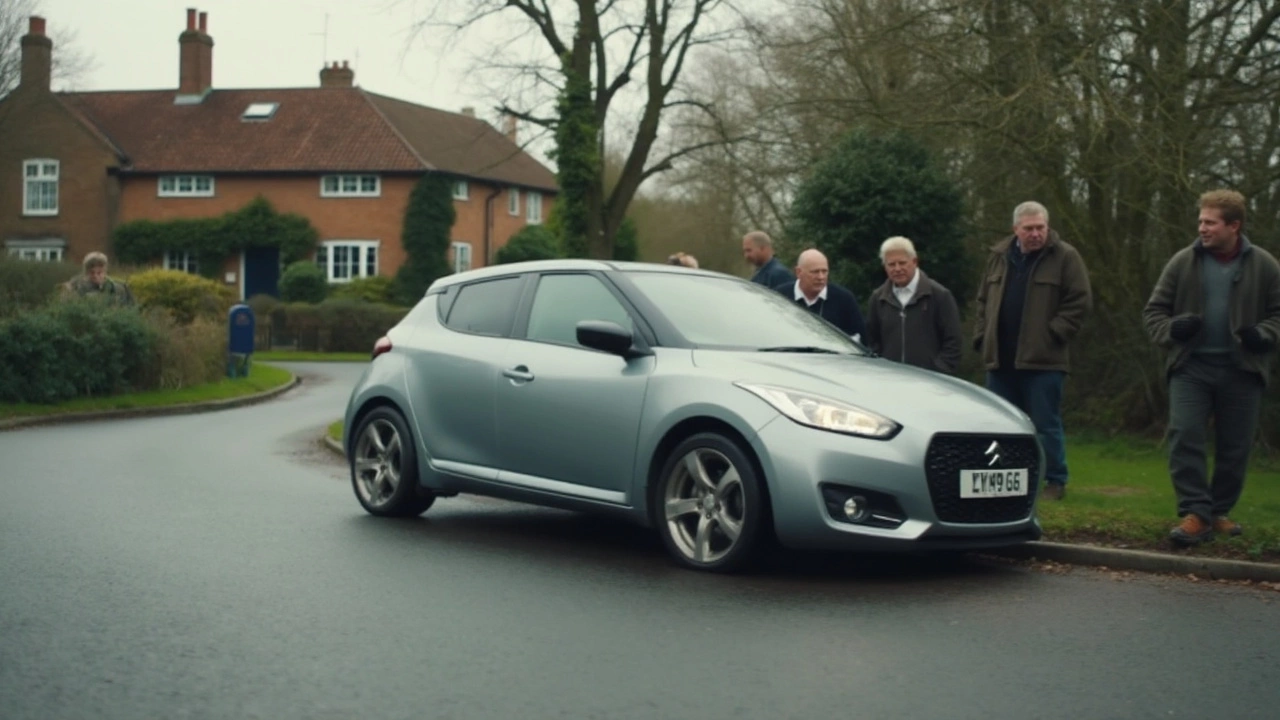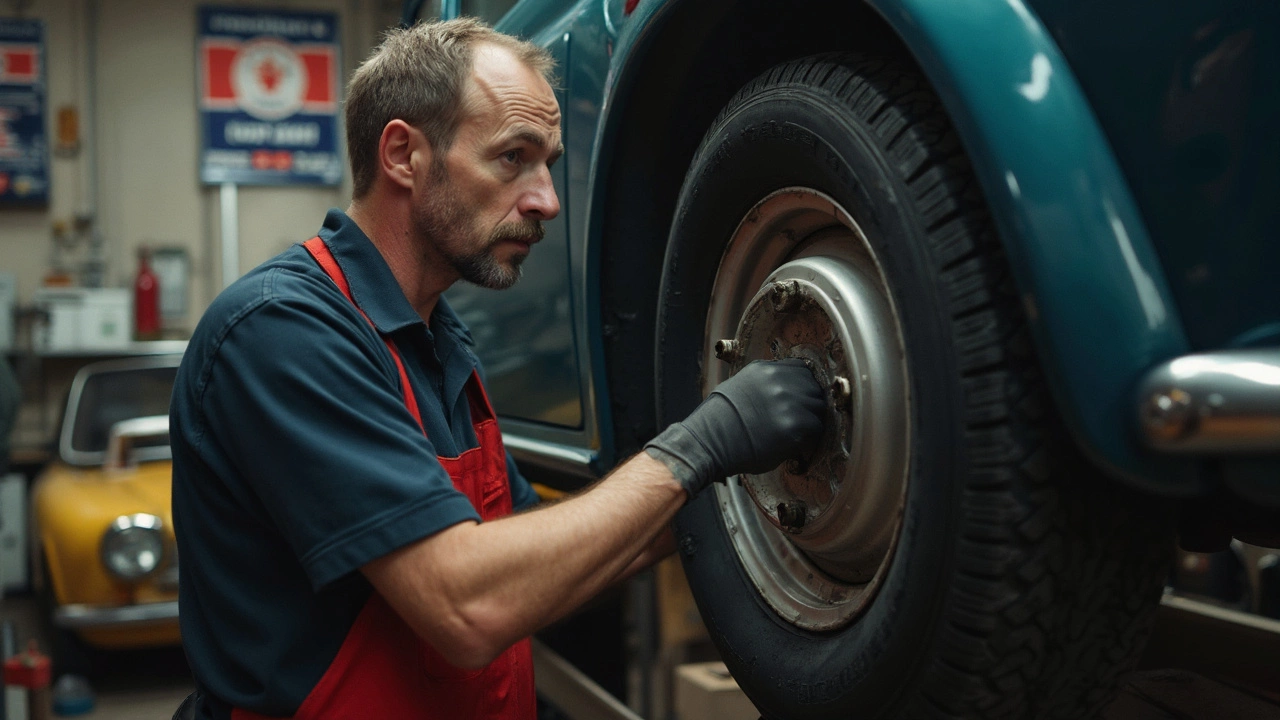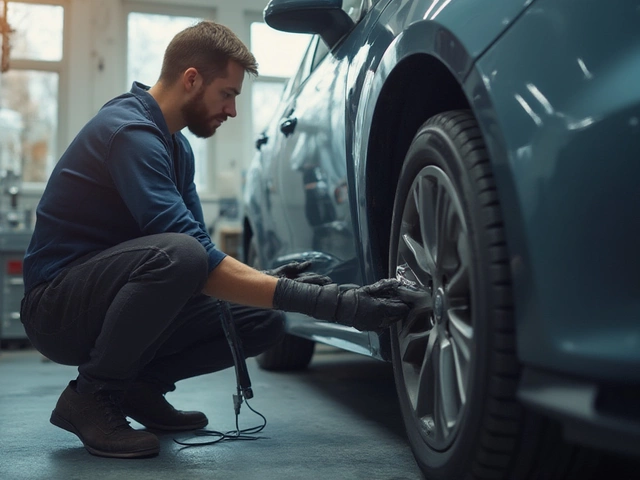Wheel spacers seem like an easy fix when your wheels don’t fit quite right or you want your car to sit wider. A lot of people add them to get that flush look or to make bigger brake kits fit without rubbing. But here’s the thing: most car experts and mechanics aren’t big fans of them for a good reason.
The main problem with spacers is that they change the way your wheels connect to your car. That one little change can trigger problems you probably never expected. Sure, things might feel fine right after you bolt them on. But over time, things can get sketchy, especially if you do a lot of highway driving or hit potholes often.
Before tossing spacers onto your car, it's good to know what could go wrong. You wouldn’t install a new part on your car if you knew it puts extra stress on vital parts, right? So before you start turning those lug nuts, it's worth understanding the real impact spacers have—beyond just looks.
- What Wheel Spacers Actually Do
- The Hidden Dangers
- Impact on Car Performance
- Longevity and Maintenance Issues
- Safer Alternatives to Spacers
What Wheel Spacers Actually Do
To keep it simple, wheel spacers are just metal rings (usually aluminum or steel) that go between your wheel and the car’s hub. Their main job is to push your wheels outwards, making them sit farther away from the hub. If your wheels are too close to the suspension or you want a wider stance, this seems like a quick fix.
What really happens when you add spacers? You’re increasing the track width, which can let you clear bigger brakes or suspension parts. Some folks add them to avoid wheel rubbing or just to make their car look tougher.
But here’s something most people overlook: spacers completely change how the wheel connects to your car. The bigger the spacer, the bigger the change. This not only puts extra load on your wheel bearings and studs but can also mess with how your steering feels. According to the Car Bibles tech column,
"Using spacers, especially thick ones, moves the wheel further out, increasing leverage and wear on the bearings and suspension. Over time, that can shorten the lifespan of these parts and lead to failures."
Types of spacers you’ll see most often:
- Slip-on spacers – Slide onto the hub, usually used for small adjustments (3-8mm).
- Bolt-on spacers – Bolt directly to the hub, then the wheel bolts to the spacer. These are used for bigger gaps (10mm+).
Check this out for a quick idea of how much spacers can change things:
| Spacer Thickness (mm) | Track Width Increase (mm) | Extra Load on Bearings (%) |
|---|---|---|
| 5 | 10 | 5% |
| 15 | 30 | 12% |
| 25 | 50 | 22% |
Even though using wheel spacers can solve certain fitment issues, that small tweak affects more than you might think. You’re not just moving wheels out—you’re making the whole assembly work harder.
The Hidden Dangers
Here's where things get real with wheel spacers. On the surface, they look like simple metal discs. But once you add them, you change the pressure points and balance across your suspension system. That might not sound dramatic, but it can cause some serious issues over time.
The biggest risk is added stress on your wheel bearings, studs, and even the suspension joints. With spacers, the wheels stick out further, so the leverage on these components goes up. It’s like carrying a heavy bag further from your body; your arm gets tired faster. Well, your car's parts ‘get tired’ faster, too—sometimes a lot faster.
One problem people run into is wheel studs snapping or loosening because they’re under more tension. You probably know what happens if you lose a wheel at speed—not good. There are also stories (plenty on car forums) of vibrations that never quite go away after spacers go on, and those can mess up your handling and tire wear.
Here’s a quick look at known issues and how often they show up, based on a survey done by a popular car tuning forum:
| Problem | Reported Frequency (%) |
|---|---|
| Premature wheel bearing failure | 38% |
| Loose or broken studs | 27% |
| Unusual vibrations/shaking | 43% |
| Uneven tire wear | 24% |
That vibration thing? It’s not just annoying. If it gets bad enough, it can lead to control problems, especially at highway speeds. That’s the last thing you want. And if your car is still under warranty, keep in mind a lot of manufacturers specifically call out that putting spacers on can void coverage on suspension and wheel-related repairs.
The wheel spacers may be legal, but if they're not installed perfect and retorqued regularly, things can come loose. You also need to buy good quality spacers, not just some cheap set online, or you can end up with even more issues. Bottom line—there’s a lot more risk hiding under that flashy look than most people realize.

Impact on Car Performance
Once you add wheel spacers, you’re not just changing how the wheels look—you’re changing how your car handles, steers, and stops. This isn’t just guesswork; it’s a known fact in the car world. Wheel spacers push your wheels outwards, which increases the track width of your vehicle. This can mess with factory steering geometry and throw off how your car is supposed to behave on the road.
Here’s why that matters: when you change the wheel offset, more force is applied to your wheel bearings, suspension, and even your lug bolts. This may not be obvious right away, but over time, these parts wear out faster than they should. According to a study by the National Highway Traffic Safety Administration, misaligned suspension and increased bearing load can lower the functional life of key parts by up to 30%.
"Adding wheel spacers might give your car a wider stance, but it also raises the leverage on critical components, which can compromise handling and long-term reliability," says Mark Benson, lead engineer at AutoTest USA.
Let’s break down the main impacts you’ll notice:
- Handling Changes: The car may feel more twitchy or unpredictable, especially at speed. This happens because the steering pivot isn’t in the spot the factory set it.
- Extra Vibration: You might feel more shaking through the steering wheel, especially if the spacers aren’t perfectly balanced or high quality.
- Braking Performance: You’re moving the wheels further from the braking system, which can make the brakes work harder and feel less responsive.
- Added Wear: Bearings and ball joints see more stress, which can mean more trips to the shop sooner than you’d like.
Check out this quick comparison to see how much the numbers can change:
| Factor | No Spacers (Stock) | With 1-inch Wheel Spacers |
|---|---|---|
| Bearing Load | 100% (Normal) | 120-125% |
| Suspension Wear Rate | 100% (Normal) | 125-130% |
| Steering Feel | Precise | Less Responsive |
A lot of people find out the hard way when unexpected noises, uneven tire wear, or weird steering starts showing up. At the end of the day, using wheel spacers changes more than just your car’s look—it messes with the driving experience and can lead to extra repair bills.
Longevity and Maintenance Issues
Wheel spacers might seem harmless at first, but over time they almost always create more hassle than they solve. When you bolt in spacers, you’re putting extra distance between the wheel hub and the wheel. This means your wheel studs or bolts are suddenly working overtime, dealing with more leverage and stress than they were ever designed for.
One real problem? Premature wear. Bearings, studs, and even brake components can start giving you trouble way earlier than normal. Car repair shops regularly see cars with spacers needing new wheel bearings thousands of miles before they should. The constant extra load makes those parts heat up and wear out. Here’s what that looks like, based on reported averages:
| Component | Average Lifespan (Stock) | Average Lifespan (With Spacers) |
|---|---|---|
| Wheel Bearings | 80,000 miles | 45,000 miles |
| Wheel Studs/Bolts | 100,000 miles | 55,000 miles |
| Brake Rotors | 50,000 miles | 30,000 miles |
Maintenance is another headache. You’ve got to keep an eye on torque settings more often because vibrations and stress can easily loosen the bolts. Forgetting to double-check can quickly turn dangerous. Plus, if you drive in rainy or snowy places, salt and grime squeeze into the new gaps the spacer creates, speeding up rust and corrosion where you don’t want it.
- Check spacer bolts for proper torque at every oil change.
- Inspect for signs of rust around spacers and wheel bolts.
- Watch for new noises from the suspension—clunking could mean something’s coming loose.
The bottom line is that wheel spacers force you to do extra work just to stay ahead of parts failure. If you’re not up for regular checks and earlier repairs, you’ll be looking at some expensive fixes faster than expected.

Safer Alternatives to Spacers
So if wheel spacers aren’t the best idea, what should you do instead? Honestly, you have a few safer, smarter options that don’t mess with your car’s handling or reliability.
The most straightforward move is to get wheels that are made for your car’s specific bolt pattern and offset. This way, you get the look and clearance you want without adding stress to your suspension or wheel bearings. Most reputable wheel shops will help you pick the right model if you give them your car’s year, make, and model.
- Wheel spacers might sound like a shortcut, but swapping to wheels with the right offset is a long-term solution that actually improves safety.
- Custom or aftermarket wheels with lowered offset (also called ET values) are widely available. You just need to match the new wheels to your car’s specs.
- If you’re dealing with fitment issues due to big brake kits, look for wheels labeled "BBK friendly" or check with a specialist who understands brake clearance.
- Some manufacturers offer hub-centric rings if the only issue is your wheel’s center hole being slightly too large for your hub. These provide a snug fit without the downsides of spacers.
If new wheels are outside your budget, consider running a narrower tire or lowering your ride—both can improve the look without messing with safety. Always check if your chosen wheels are certified to SAE or TUV standards. These labels show the wheels passed tough quality and safety checks.
Here’s a quick comparison of methods:
| Method | Impact on Car | Reliability | Typical Cost |
|---|---|---|---|
| Wheel Spacers | Increases stress on hubs, may affect alignment | Low | $40-$150 per set |
| Aftermarket Wheels (Correct Offset) | No extra stress, proper fit | High | $400-$1500 per set |
| Hub Rings | Ensures snug fit, no added stress | High | $10-$30 per set |
| BBK-Friendly Wheels | Made for brake clearance specifically | High | $450-$1600 per set |
The bottom line: there are smarter, proven ways to get that aggressive stance or brake clearance without risking your car’s safety. Always pick parts made for your vehicle and don’t take shortcuts when it comes to wheels—they’re what keeps you connected to the road.






